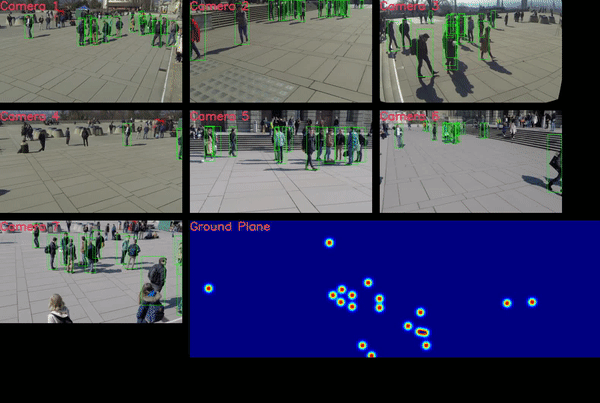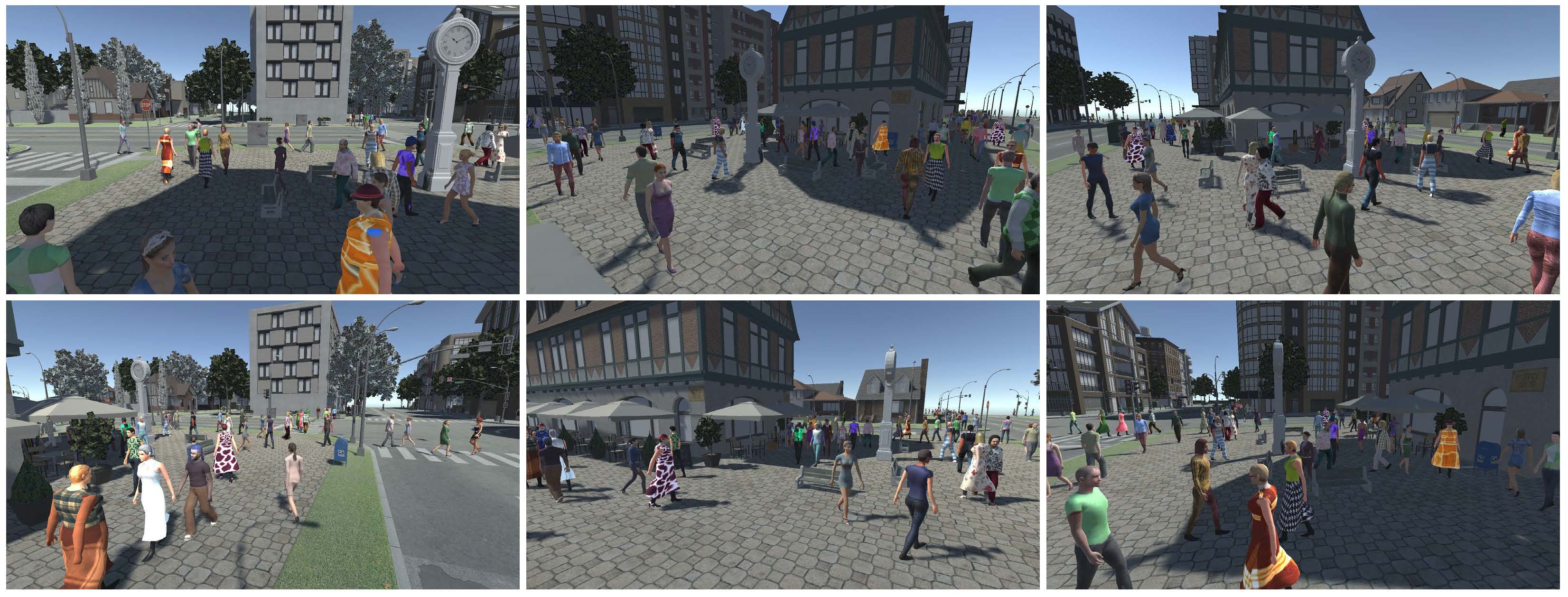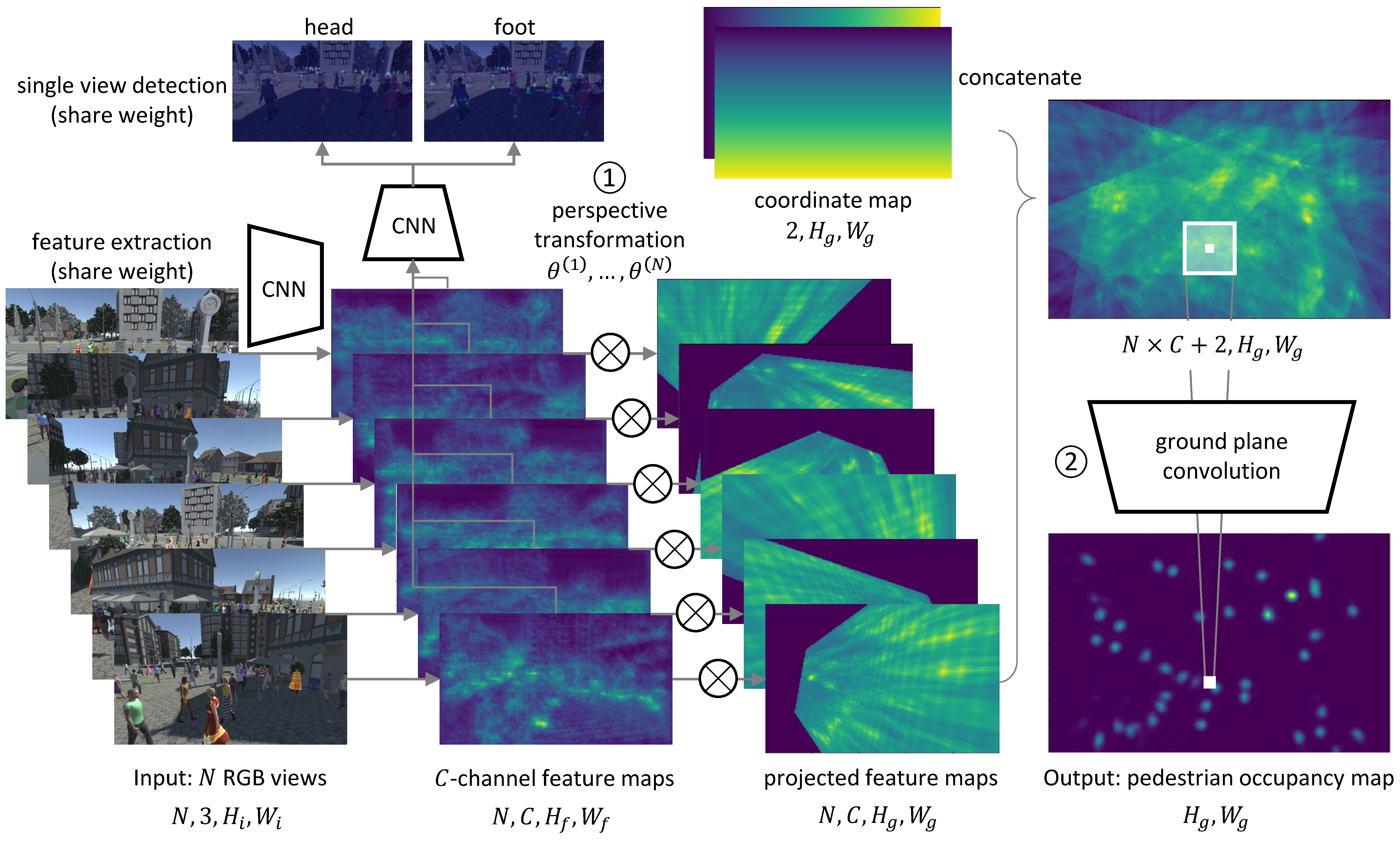@inproceedings{hou2020multiview,
title={Multiview Detection with Feature Perspective Transformation},
author={Hou, Yunzhong and Zheng, Liang and Gould, Stephen},
booktitle={ECCV},
year={2020}
}
Please visit link for our new work MVDeTr, a transformer-powered multiview detector that achieves new state-of-the-art!
We release the PyTorch code for MVDet, a state-of-the-art multiview pedestrian detector; and MultiviewX dataset, a novel synthetic multiview pedestrian detection datatset.
| Wildtrack | MultiviewX |
|---|---|
 |
 |
Using pedestrian models from PersonX, in Unity, we build a novel synthetic dataset MultiviewX.
MultiviewX dataset covers a square of 16 meters by 25 meters. We quantize the ground plane into a 640x1000 grid. There are 6 cameras with overlapping field-of-view in MultiviewX dataset, each of which outputs a 1080x1920 resolution image. We also generate annotations for 400 frames in MultiviewX at 2 fps (same as Wildtrack). On average, 4.41 cameras are covering the same location.
Please refer to this link for download.
Please refer to this repo for a detailed guide & toolkits you might need.
This repo is dedicated to the code for MVDet.
This code uses the following libraries
- python 3.7+
- pytorch 1.4+ & tochvision
- numpy
- matplotlib
- pillow
- opencv-python
- kornia
- matlab & matlabengine (required for evaluation) (see this link for detailed guide)
By default, all datasets are in ~/Data/. We use MultiviewX and Wildtrack in this project.
Your ~/Data/ folder should look like this
Data
├── MultiviewX/
│ └── ...
└── Wildtrack/
└── ...
In order to train classifiers, please run the following,
CUDA_VISIBLE_DEVICES=0,1 python main.py -d wildtrackThis should automatically return evaluation results similar to the reported 88.2% MODA on Wildtrack dataset.
You can download the checkpoints at this link.







